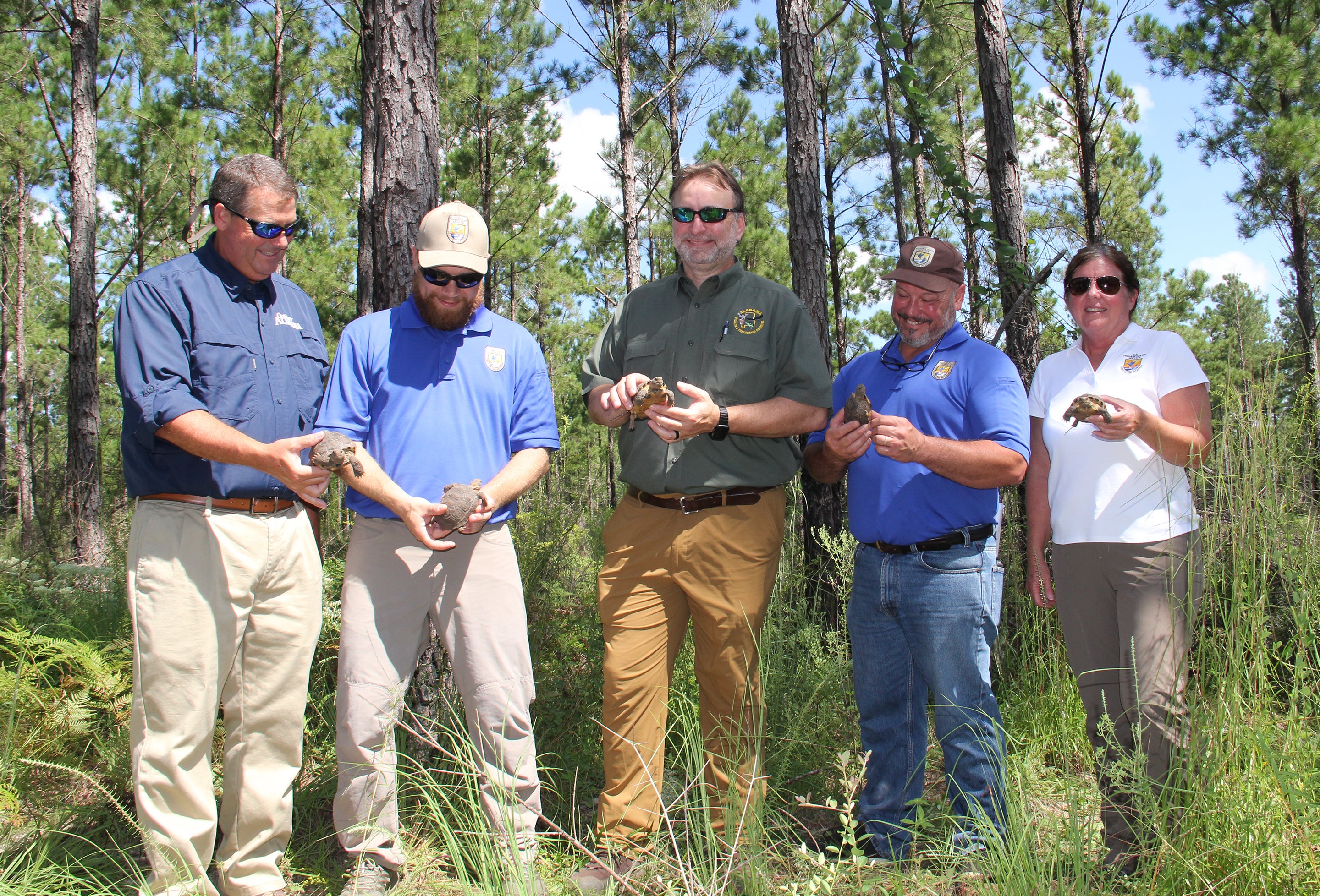By DAVID RAINER
Alabama Department of Conservation and Natural Resources
Gopher tortoise conservation reached a new level recently when the Alabama Department of Conservation and Natural Resources (ADCNR) teamed with the U.S. Fish and Wildlife Service (USFWS), Eckerd College and Birmingham Zoo to release 98 young tortoises into the Geneva State Forest Wildlife Management Area (WMA) in Covington County.
The gopher tortoise is considered a keystone species, which impacts about 365 species of amphibians, reptiles, birds, mammals and invertebrates in the sandy-soil habitat across their southeastern range.
Jeff Goessling, an assistant professor at Eckerd College in St. Petersburg, Florida, who is on the forefront of the tortoise conservation efforts, said the gopher tortoise burrow is the key to the species.
“This is an important animal for a lot of species,” Goessling said. “It’s the burrow that has that function. They spend about 98 percent of their life in that burrow.”
The Geneva State Forest WMA gopher tortoise project, led by Goessling, is funded through the Cooperative Endangered Species Conservation Fund (Section 6 program) with USFWS, which provides funds for conservation efforts for listed, at-risk and endangered species on non-federal land.
Amy Silvano, Assistant Chief of Wildlife for ADCNR’s Wildlife and Freshwater Fisheries (WFF) Division, thanked Eckerd College and the Birmingham Zoo for their contributions to the project.
“Both of these entities have stepped up to do the research and raise the headstart (hatchlings) tortoises that we released,” Silvano said. “And I also want to thank Dr. Craig Guyer for all his work on this project and his continued dedication towards gopher tortoise conservation in Alabama.”
WFF staff, Eckerd College representatives and Birmingham Zoo staff constructed starter burrows at the WMA in preparation for the release.
Conservation Commissioner Chris Blankenship, WFF Director Chuck Sykes, USFWS Southeast Region Director Leopoldo “Leo” Miranda-Castro, USFWS Alabama Section 6 Coordinator Shannon Holbrook, and John Tupy, Gopher Tortoise Lead for the federally listed range out of the USFWS Hattiesburg office in Mississippi, participated in the tortoise release.









